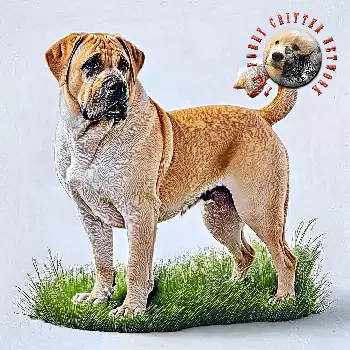The integration of a Majorcan Bulldog into family life represents both exceptional rewards and significant responsibilities that require careful consideration of the breed's unique characteristics, historical background, and specific needs for successful socialization and management. These dogs bring tremendous loyalty, protective instincts, and companionship potential to households equipped to provide appropriate leadership, training, and environmental management throughout the dog's lifetime. However, their guardian heritage and substantial physical capabilities demand experienced ownership and realistic expectations about the commitment required for successful family integration.
Establishing appropriate family hierarchies and role definitions is crucial for Majorcan Bulldog success in domestic environments. These dogs naturally seek to understand their position within family social structures and respond best when provided with clear, consistent guidance about behavioral expectations and acceptable activities. Family members must actively participate in the dog's training and socialization while presenting united approaches to rules and boundaries. Inconsistent management between different family members can create confusion and potentially undermine the dog's respect for authority, leading to behavioral problems that affect entire household dynamics.
The breed's relationship with children requires particularly thoughtful management due to their size, strength, and protective instincts. While generally patient and gentle with family children, Majorcan Bulldogs may display overprotective behaviors that can interfere with normal childhood activities and social interactions. Teaching children appropriate interaction methods while training the dog to moderate protective responses creates the foundation for positive relationships. Supervision remains essential during interactions between the dog and young children, not due to aggression concerns but because of the breed's substantial size and potential for accidental injury during enthusiastic play or protective responses.
Household management strategies must account for the breed's territorial instincts and protective nature, particularly regarding visitors, service personnel, and social gatherings. Majorcan Bulldogs require advance preparation and structured introductions to accept unfamiliar people in their territory without displaying inappropriate protective behaviors. Families must develop protocols for managing the dog during various social situations while ensuring guest comfort and safety. This may include confinement during large gatherings, structured introduction procedures for new visitors, or environmental modifications that help the dog understand appropriate responses to different types of human presence in their territory.
Exercise and activity coordination within family contexts requires significant daily commitment from multiple household members to meet the breed's physical and mental stimulation needs. While not extremely high-energy dogs, Majorcan Bulldogs benefit from regular exercise, training activities, and purposeful jobs that engage their intelligence and working instincts. Family schedules must accommodate daily walks, training sessions, and interactive activities while providing appropriate outlets for the dog's natural behaviors. Failure to meet these needs consistently can result in behavioral problems that affect all family members and neighborhood relationships.
Multi-pet households face additional challenges when integrating Majorcan Bulldogs with other animals, particularly dogs of similar size or dominant personalities. Early socialization and careful introduction procedures are essential for establishing peaceful coexistence, though some dogs may always require management around certain types of animals. The breed's prey drive and territorial instincts may create ongoing challenges with small pets, requiring vigilant supervision and environmental modifications to ensure safety for all animals in the household. Success in multi-pet situations depends heavily on individual dog temperament, socialization history, and ongoing management consistency.
Long-term family planning considerations include the breed's strong attachment patterns, substantial care requirements, and potential challenges with major life transitions such as relocations, new family members, or changes in household composition. Majorcan Bulldogs typically develop deep bonds with their families and may struggle significantly with rehoming situations or major disruptions to established routines. Families must be prepared for long-term commitments that extend throughout the dog's lifetime, recognizing that these dogs become integral family members whose welfare depends on consistent care and stable relationships.
Financial planning for Majorcan Bulldog ownership involves considerations beyond typical pet care expenses, including potential liability insurance, professional training assistance, secure fencing and containment systems, and specialized veterinary care for large breeds. Their guardian nature and substantial size may create insurance implications that affect homeowner's policies and community relationships. Families must budget for quality nutrition appropriate for large, active dogs, preventive health care, and potential emergency medical expenses throughout the dog's lifetime.
Educational responsibilities extend to all family members, who must understand the breed's history, characteristics, and appropriate management techniques to ensure successful integration and prevent problems that could affect family relationships or community standing. Children need age-appropriate education about dog behavior, safety protocols, and their roles in the dog's care and training. Adults must commit to ongoing education about breed-specific needs, training techniques, and problem-solving strategies that support long-term success in family environments where these remarkable but challenging dogs can thrive and contribute positively to household dynamics and family security.

